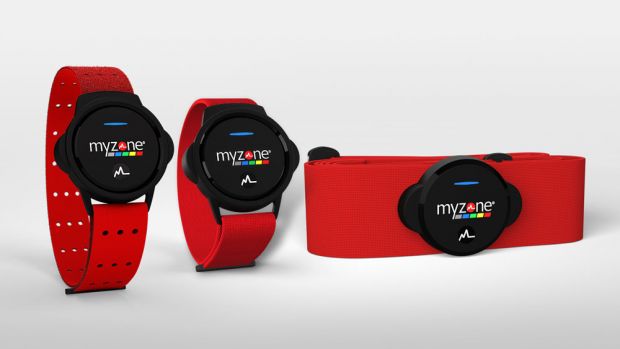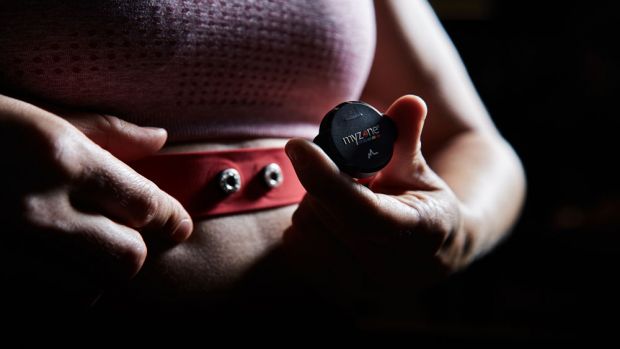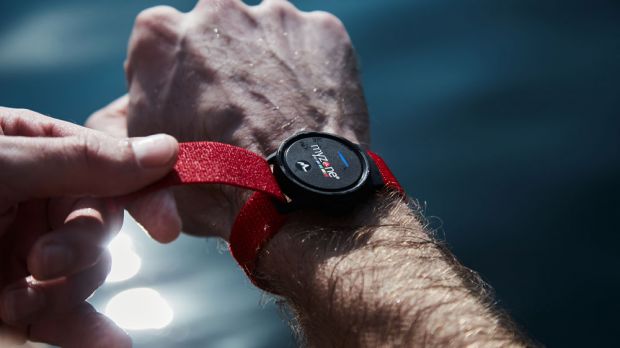You can trust Coach
If you want the most accurate heart rate tracking possible while exercising, especially when running or performing a HIIT workout, wear a chest strap that uses an ECG sensor. The next best thing is a strap worn on the forearm or upper arm, which uses an optical PPG sensor. Least accurate is a wrist strap that also uses a PPG sensor.
However, accuracy isn’t the be-all and end-all, and if you exercise for fun then comfort and convenience are just as important. In all likelihood an arm or wrist strap will work just fine for low-intensity activities.
The MyZone MZ-Switch offers the best of all worlds. Wear it on your chest and it uses its ECG sensor, but it will switch to its optical sensor if you use the included arm or wrist straps.

This versatility means you can make the choice between convenience and accuracy every time you exercise. Unless you’re swimming the chest is always the best spot for accuracy, but MyZone suggests that if you’re walking or cycling you can get by with the wrist, and the upper arm will work for running, rowing and weight lifting.
After testing the MZ-Switch in various positions for various workouts, I can say that those recommendations are broadly right, but I’d suggest moving the strap to your chest for running and any kind of HIIT. The arm position provided mostly accurate results compared with a Garmin HRM-Pro chest strap, but the readings lag when you’re spiking your heart rate during an interval, and you’d still get the best accuracy on your chest.
It was one of the better wrist HR monitors I’ve tried during lower-intensity activities like yoga, but I wore it on my upper arm or chest for anything where I was gripping a weight or even my bike’s handlebars. Greater accuracy trumps the marginal extra convenience of wrist vs upper arm for my training.

I was also impressed by the MZ-Switch’s battery life: the sensor will last between three and six months on a single charge (the ECG sensor is less taxing on the battery than the optical one). That’s a serious amount of battery endurance considering the Switch is rechargeable and very small.
It also connects to other devices via both ANT+ and Bluetooth, and I’ve linked it to a range of watches plus my laptop, phone and iPad without any problems. It takes a second to lock on to your heart rate on the chest automatically and then beeps to let you know it’s tracking, while you have to turn it on using its button to use the wrist or arm strap.
See related
Alongside the hardware, MyZone offers an app built around MyZone Effort Points (MEPs). These are earned based on how hard you work during any type of exercise, with time spent in higher heart rate zones earning you more points compared with the lower ones.
You can follow your real-time effort in the MyZone app, and some gym chains have partnered with MyZone so your heart rate and zone is displayed on a screen during classes. The LED on the MZ-Switch will also flash the colour of the heart rate zone you’re in when using it on the wrist or forearm.
Since everyone’s heart rate zones are personalised to them in the app (based on basic info like age and weight at first, although over time it will be fine-tuned for more accuracy), everyone can earn points at the same rate if they’re making the same relative effort.
The app also contains some guided workouts based on heart rate that you can do with any type of exercise, and there are social elements too in that you can connect with other MyZone users and see their workouts.

The strap will also link to any other app you might be using, like Strava or Fiit, which is a godsend because I did not enjoy using the MyZone app. It’s messy and hard to find what you’re looking for, with social features like your connections or MZ-Chat given prominence over the workout sections. Unless you find MEPs compelling, you might find that you steer clear of the app aside from using it to check the MZ-Switch’s battery life from time to time.
And you would need to find MEPs an attractive proposition indeed to buy the MZ-Switch. At £139.50 it is very expensive. You could combine the Polar Verity Sense armband (£80) with something like the Wahoo TICKR chest strap (£40), save £20 and lose neither accuracy or comfort. I can’t really fault the MZ-Switch, but there’s no reason to invest in this device if you’re comfortable wearing a chest strap and don’t plan on using the MEP system. There are many great straps available for much less that link to everything aside from MyZone.
Buy from MyZone | £139.99

Nick Harris-Fry is a journalist who has been covering health and fitness since 2015. Nick is an avid runner, covering 70-110km a week, which gives him ample opportunity to test a wide range of running shoes and running gear. He is also the chief tester for fitness trackers and running watches, treadmills and exercise bikes, and workout headphones.

